Abstract
Triazolopyrimidine sulfanilides are a class of highly active herbicides whose primary target is acetolactate synthase. Spontaneous mutants of tobacco (Nicotiana tabacum) (KS-43) and cotton (Gossypium hirsutum) (PS-3 and DO-2) resistant to triazolopyrimidine sulfonanilide were selected in tissue culture. Acetolactate synthase partially purified from the three mutants were 80- to 1000-fold less sensitive to inhibition by the compound compared with the corresponding wild-type enzyme. The mutants also varied in the cross-resistance pattern to other acetolactate synthase inhibiting herbicides in the sulfonylurea, imidazolinone, and pyrimidyl-oxy-benzoate chemical families. Thus, acetolactate synthase from KS-43, PS-3, and DO-2 cultures have different mutations. The affinities for pyruvate, thiamine pyrophosphate, as well as the activity of the mutant enzymes were found to be comparable to the corresponding wild-type enzymes. However, the enzyme from PS-3 was highly resistant to feedback inhibition by valine and leucine. In contrast, acetolactate synthase from KS-43 and DO-2 were inhibited by valine and leucine to nearly the same extent as the wild-type enzymes. Also, PS-3 cultures accumulated much higher levels of the branched chain amino acids compared to the wild-type cotton culture. The mutation in the PS-3 enzyme has therefore rendered it insensitive to feedback regulation by valine and leucine.
Full text
PDF
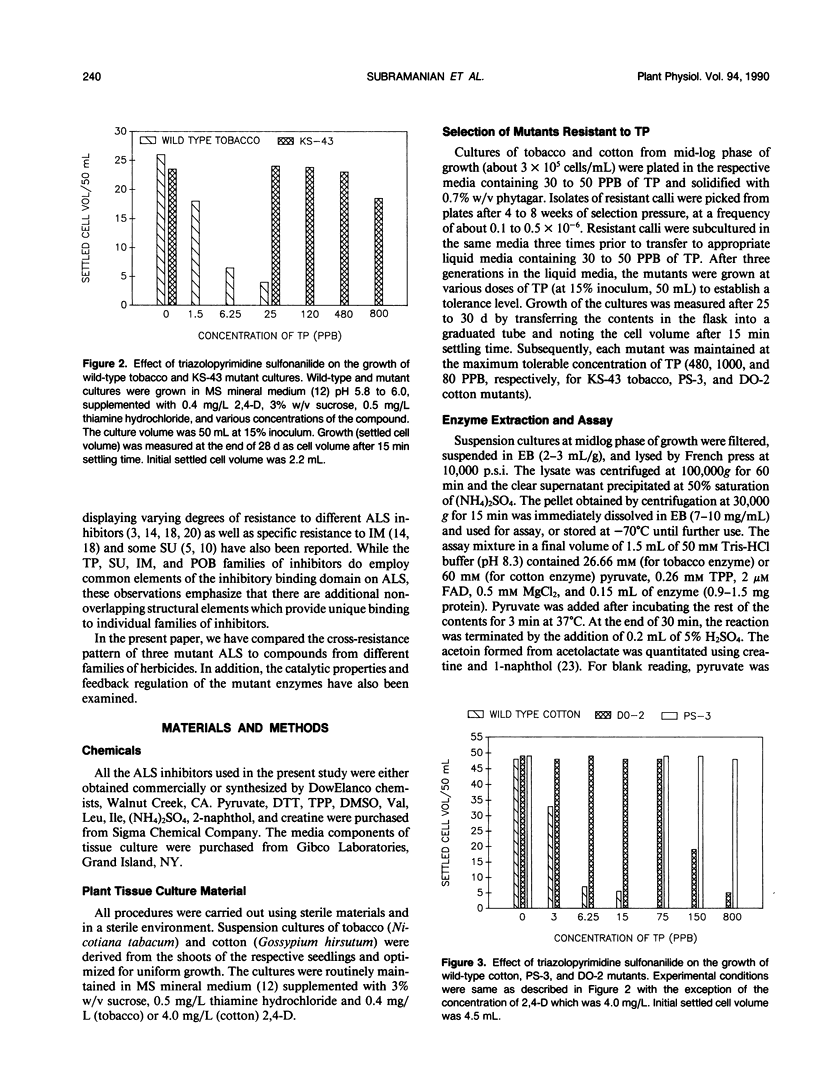
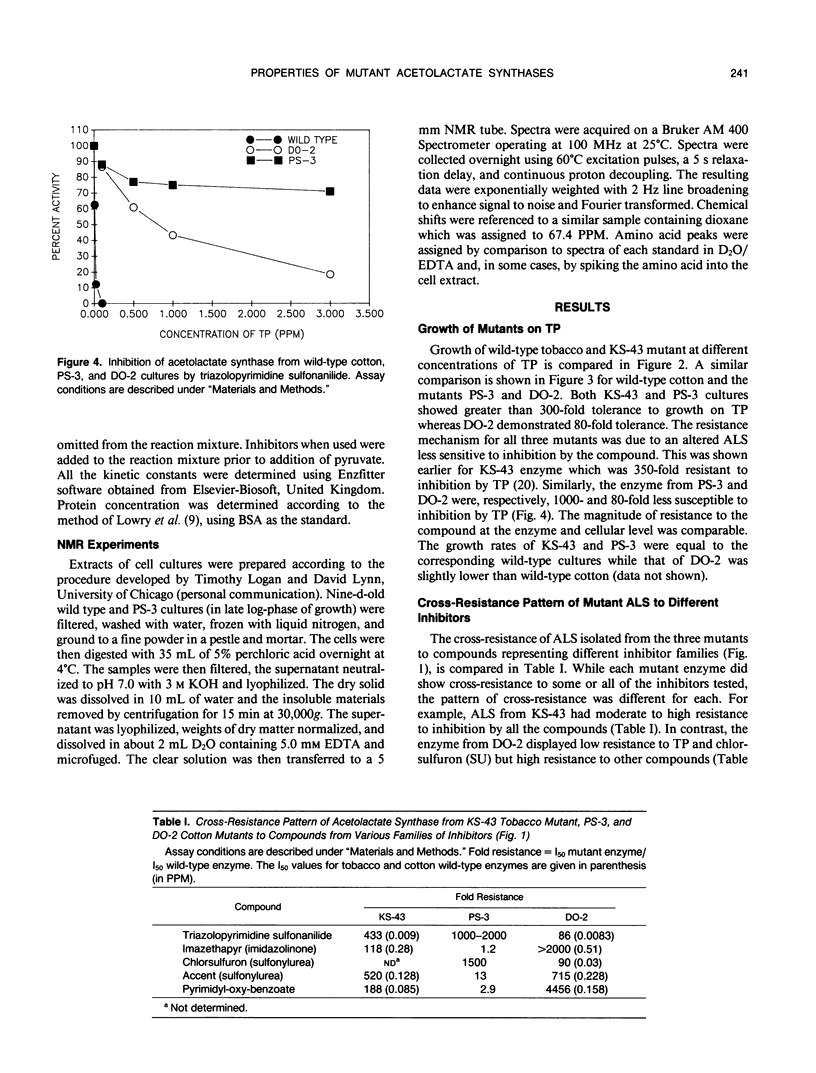
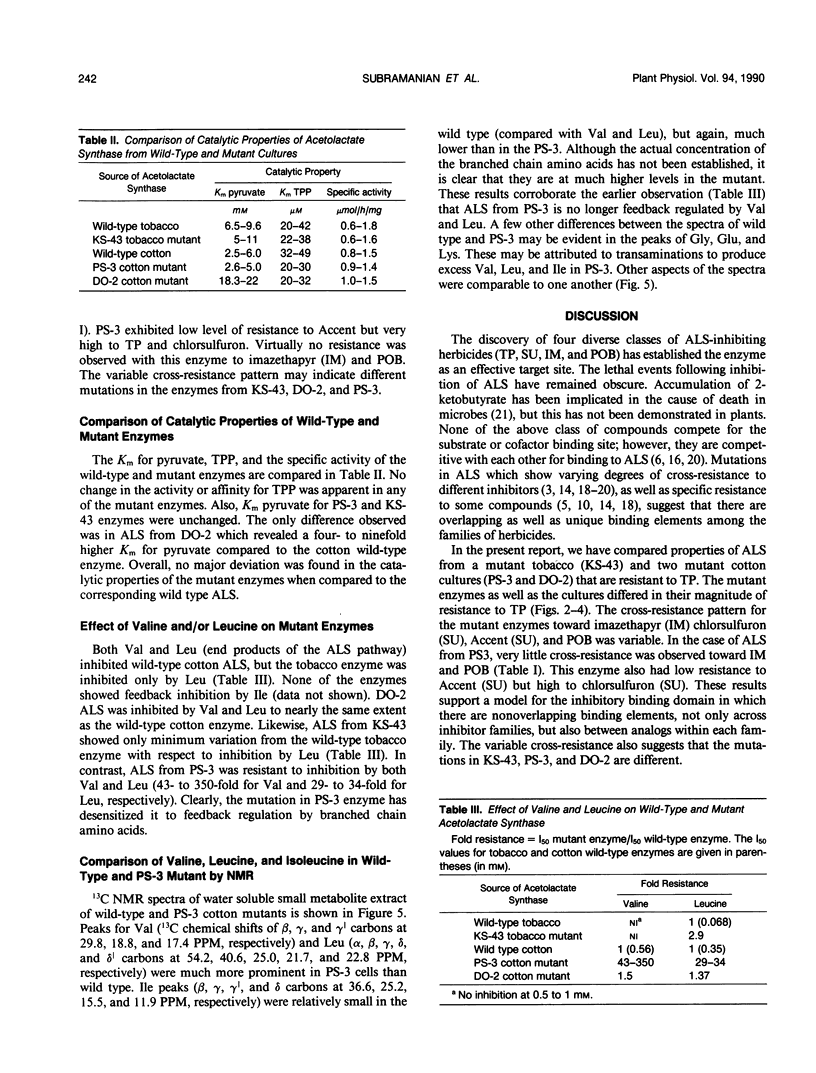
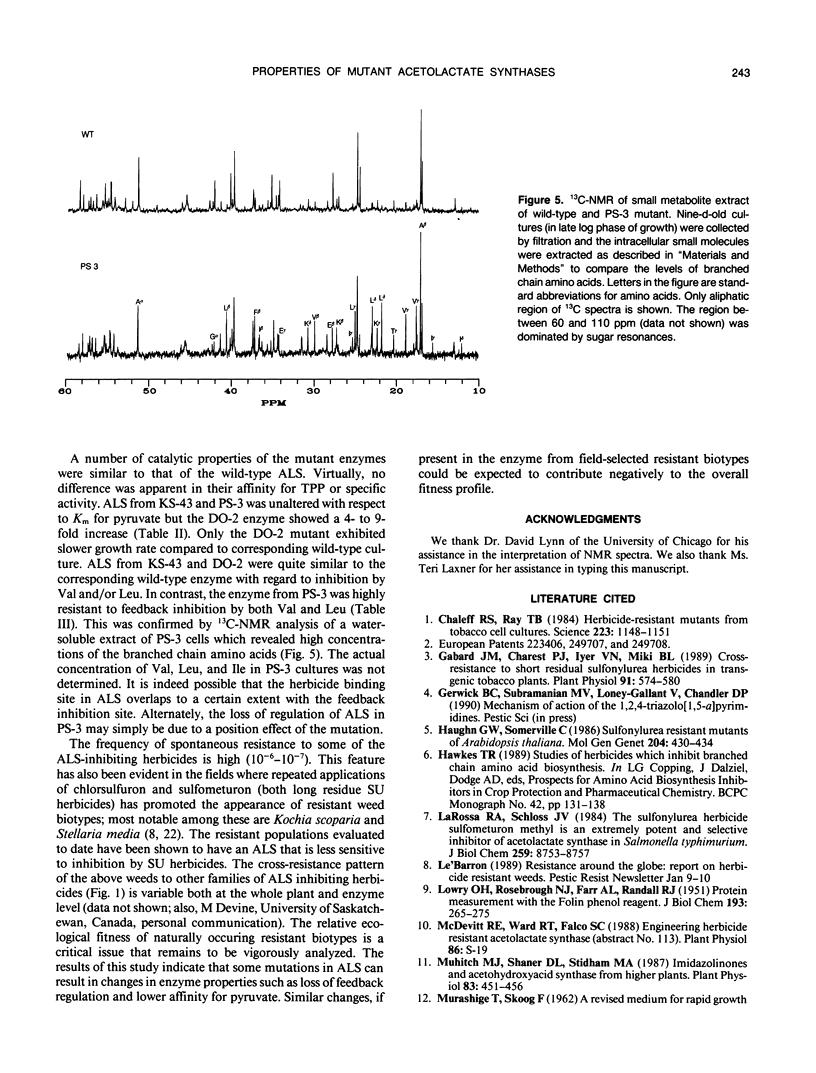
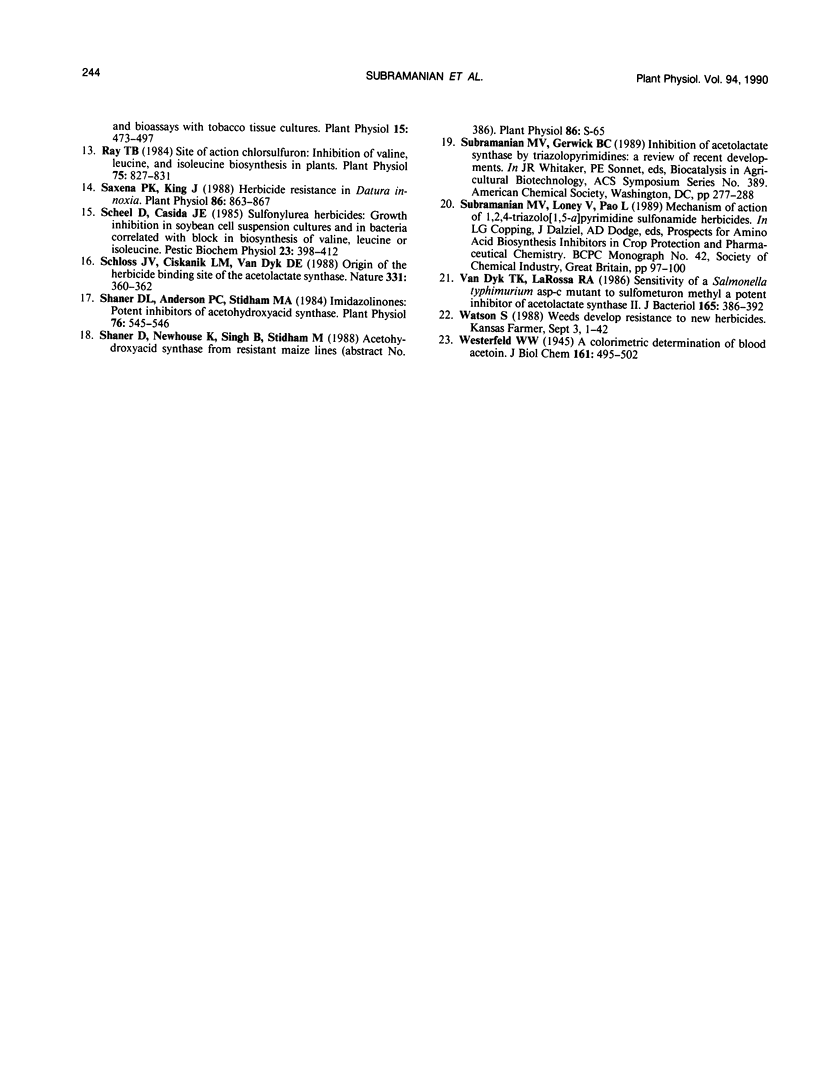
Selected References
These references are in PubMed. This may not be the complete list of references from this article.
- Chaleff R. S., Ray T. B. Herbicide-resistant mutants from tobacco cell cultures. Science. 1984 Mar 16;223(4641):1148–1151. doi: 10.1126/science.223.4641.1148. [DOI] [PubMed] [Google Scholar]
- Gabard J. M., Charest P. J., Iyer V. N., Miki B. L. Cross-resistance to short residual sulfonylurea herbicides in transgenic tobacco plants. Plant Physiol. 1989 Oct;91(2):574–580. doi: 10.1104/pp.91.2.574. [DOI] [PMC free article] [PubMed] [Google Scholar]
- LOWRY O. H., ROSEBROUGH N. J., FARR A. L., RANDALL R. J. Protein measurement with the Folin phenol reagent. J Biol Chem. 1951 Nov;193(1):265–275. [PubMed] [Google Scholar]
- LaRossa R. A., Schloss J. V. The sulfonylurea herbicide sulfometuron methyl is an extremely potent and selective inhibitor of acetolactate synthase in Salmonella typhimurium. J Biol Chem. 1984 Jul 25;259(14):8753–8757. [PubMed] [Google Scholar]
- Muhitch M. J., Shaner D. L., Stidham M. A. Imidazolinones and acetohydroxyacid synthase from higher plants: properties of the enzyme from maize suspension culture cells and evidence for the binding of imazapyr to acetohydroxyacid synthase in vivo. Plant Physiol. 1987 Feb;83(2):451–456. doi: 10.1104/pp.83.2.451. [DOI] [PMC free article] [PubMed] [Google Scholar]
- Ray T. B. Site of action of chlorsulfuron: inhibition of valine and isoleucine biosynthesis in plants. Plant Physiol. 1984 Jul;75(3):827–831. doi: 10.1104/pp.75.3.827. [DOI] [PMC free article] [PubMed] [Google Scholar]
- Saxena P. K., King J. Herbicide Resistance in Datura innoxia: Cross-Resistance of Sulfonylurea-Resistant Cell Lines to Imidazolinones. Plant Physiol. 1988 Mar;86(3):863–867. doi: 10.1104/pp.86.3.863. [DOI] [PMC free article] [PubMed] [Google Scholar]
- Shaner D. L., Anderson P. C., Stidham M. A. Imidazolinones: potent inhibitors of acetohydroxyacid synthase. Plant Physiol. 1984 Oct;76(2):545–546. doi: 10.1104/pp.76.2.545. [DOI] [PMC free article] [PubMed] [Google Scholar]
- Van Dyk T. K., LaRossa R. A. Sensitivity of a Salmonella typhimurium aspC mutant to sulfometuron methyl, a potent inhibitor of acetolactate synthase II. J Bacteriol. 1986 Feb;165(2):386–392. doi: 10.1128/jb.165.2.386-392.1986. [DOI] [PMC free article] [PubMed] [Google Scholar]


